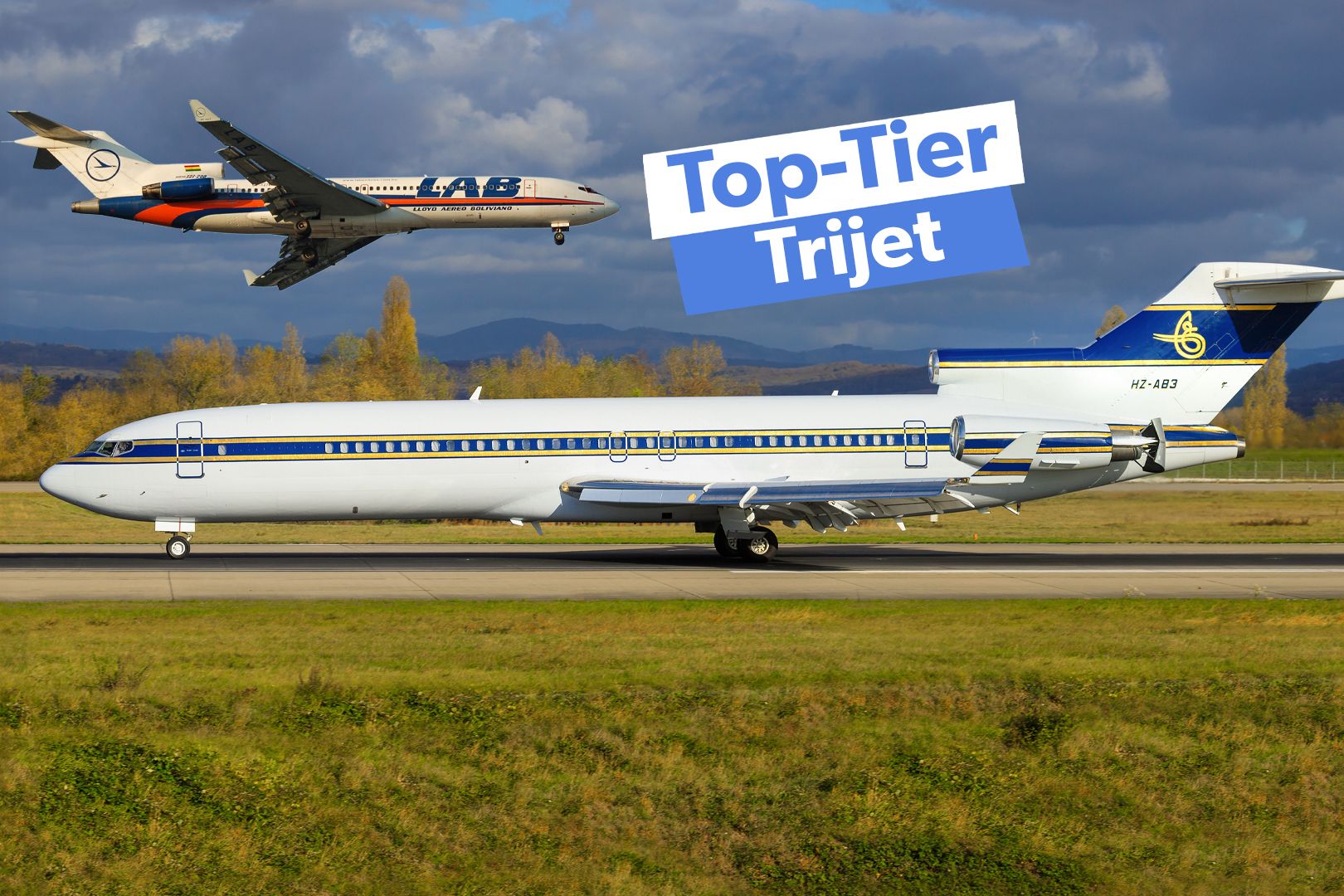Summary The Boeing 727 was successful due to its suitability for smaller airports, offering both range and passenger capacity. The 727's design made it ideal for hot and high conditions at high-altitude airports like Denver. Different variants and sizes of the 727 contributed to its high sales worldwide, making it a versatile option.
More than 60 years ago, the Boeing 727 entered into revenue-earning service. On February 1st, 1964, the US-built trijet reached a key milestone when Eastern Air Lines deployed the type on its first flights. In the decades that followed, Boeing would produce close to 2,000 727s, but why was it so successful? Well-suited to smaller airports One of the reasons that the Boeing 727 sold so well was that it could access smaller airports.

While this was already the case for regional aircraft, airlines often have to compromise on range and passenger capacity when deploying such planes. As such, the 727 offered an ideal compromise, as, despite being on the smaller side, it could still serve medium-range routes of several thousand kilometers. For passengers at these airports, this also meant better connectivity, particularly in the US, where regional traffic is often fed through hubs.
The 727 also offered a better deal for the airports, as, being one of the first airliners to be fitted with an auxiliary power unit (APU), it didn't rely on these facilities having ground power. Similarly, its rear stairs allowed passengers to board and disembark with ease. Of course, it shouldn't come as a surprise that the 727 was suited to such operations.
After all, as Modern Airliners notes, Boeing developed it in consultation with three US carriers (American Airlines, Eastern Air Lines, and United Airlines) to meet such specifications. Nonetheless, its versatility made it attractive to customers worldwide. The US manufacturer produced more than 1,800 examples of the type.
Undeterred by hot and high conditions Hot and high conditions refer to those which prevail at high-altitude airports, such as Denver International Airport (DEN). Here, the thinner air means that aircraft generate less lift when taking off, and the performance of their engines is also impacted. As such, normal aircraft typically require longer runways to get airborne when operating in such conditions.
However, the Boeing 727 was well suited to these, which won it favor with carriers that had a strong presence at airports like Denver. One reason why the trijet was well-matched to hot and high conditions was the fact that, due to its engines being rear-mounted, it had space for both leading and trailing edge flaps across the entire wing. These generated more lift, thus negating the impact of low air density.
The presence of these high-lift devices across the Boeing 727's wings further contributed to its suitability for usage at smaller airports. Sam Chui notes that such facilities included Key West International Airport (EYW) and New York LaGuardia Airport (LGA). When landing at these airports, the 727 also benefitted from effective nosewheel brakes.
A useful mix of variants contributed to high sales Boeing further increased the 727's attractiveness by offering it in two different sizes. The initial 727-100 was followed by the larger 727-200, with these aircraft having maximum capacities of 131 and 189 passengers respectively. This meant that the 727 family was able to appeal to a wider range of operators, which only increased further when convertible and cargo variants were introduced.
But just how successful was the Boeing 727? All in all, AloTrip notes that Boeing built 1,832 aircraft from the 727 family, of which 1,831 were delivered to customers. Of these, 1,245 (almost 68%) were 727-200s, but the US manufacturer also produced: 407 x Boeing 727-100s 164 x Boeing 727-100Cs 17 x Boeing 727-200Fs. This combined tally made the Boeing 727 the world's best-selling jetliner until the 737 overtook it in the 1990s.
Among the 727's major operators were: Airline Boeing 727-100s Boeing 727-200s Total United Airlines 126 104 230 Delta Air Lines 8 183 191 American Airlines 59 125 184 Pan Am 46 105 151 Continental Airlines 26 109 135 The Boeing 727 remained in commercial service until January 2019, when Iran Aseman Airlines operated the aircraft's final passenger flight from Zahedan (ZAH) and Tehran (IKA). US airlines wanted a plane they could fly from airports with shorter runways, and smaller than a Boeing 707. In addition to commercial airlines, the Boeing 727 also proved popular with a host of government and military operators around the world, including: Bolivian Air Force Ecuadorian Air Force Mexican Air Force Royal New Zealand Air Force US Air Force.
The aircraft's popularity came about despite a high number of accidents, including 120 hull loss incidents, which, in total, resulted in the deaths of over 4,000 people. Among the high-profile crashes were: Pan Am Flight 759 - crashed on take-off from New Orleans International Airport (MSY) in July 1982. All 145 people onboard the Boeing 727 were killed, as well as eight on the ground.
Air France Flight 422 - crashed on take-off from Bogotá's El Dorado International Airport (BOG) in April 1998, killing all 53 passengers and crew members. TAME Flight 120 - crashed into the side of Cumbal Volcano in Colombia in January 2002, killing all 94 people onboard. Iran Air Flight 277 - crashed on landing at Urmia Shahid Bakeri International Airport (OMH) in Iran in January 2011, killing 77 of the 104 passengers and crew members onboard.
The trijet crashed in stormy conditions and low visibility..




















